Corsair Mk II, Fleet Air Arm, 1834 Naval Air Squadron, HMS Victorious
Corsair Mk II Fleet Air Arm, 1834 Naval Air Squadron, HMS Victorious, British Pacific Fleet markings (two models).
Hobbycraft British Commonwealth Corsair, No. HC1528 (1996) and Chance Vought F4U-1 Corsair, Otaki, No. OT2-27-400 (1976)
1834 Naval Air Squadron officially formed at Naval Air Station Quonset Point, Rhode island, on 15 July 1943, Lt. Cdr A.M. Tritton DSC RNVR in command, with 10 Corsair Mk Is. 1836 Naval Air Squadron officially formed at Naval Air Station Quonset Point, Rhode island, on 18 August 1943, Lt. Cdr (A) C.C. Tomkinson RNVR in command, with 10 Corsair Mk Is on inventory.
US-based training consisted of advance flight training in Corsair Mk Is ('Birdcage') at NAS Quonset Pt, NAS Brunswick, ME and NAS Norfolk (all former duty stations/homes) with carrier landings conducted in Chesapeake Bay aboard USS Charger. By Christmas 1943, FAA pilots traded Mk I Corsairs at Roosevelt Field, NY (now a shopping mall) for Mk IIs which they flew to Norfolk for loading on British Escort carriers for transit to Liverpool and integration onto Royal Navy carriers (HMS Victorious in the case of 1836 and 1834 squadrons). In the UK, 47th Naval Fighter Wing - consisting of 1834 and 1836 Naval Air Squadrons was formed on 17 January 1944 at RNAS Stretton, Wing Leader Lieutenant Commander (A) F.R.A. Turnbull, DSC, RN, 17 January 1944, later Major R.C. Hay, DSC, RM, 14 August 1944.
LT Don Sheppard, RNVR, later Commander, Royal Canadian Navy, is is represented by aircraft 13-7. At age 21, Lt. Sheppard became the only Commonwealth Corsair ace (meaning all his kills were in the Corsair). Commander Sheppard was born in Toronto, Canada in 1924. He retired in 1974, lived in Nova Scotia and passed away in May 2018. He is survived by five children.*
My research of Lt Don Sheppard makes mention of his October 1943 training, but may have been referring to deck landing training from NAS Norfolk to USS Charger in Chesapeake Bay (only).
Aircraft 13-5 is semi-fictional and I created it from spare decals from Hobbycraft and AeroMaster #48-046, 'US Aircraft in Fleet Air Arm Service'. 13-5 is my restoration of a 1990s original build of the Otaki model. The original engine was becoming more offensive to me as my modeling skill and knowledge began to (somewhat) improve. iModeler member Drew Tarter @navairfan described the Otaki engine as "cartoonish", and his article depicts bringing his Otaki model all the way up to Tamiya standards. Not as ambitious as Drew, I just wanted the kit to represent a more accurate version of the Pratt & Whitney R-2800 engine. Hope you like the photos.
13-7 receive a Quickboost engine and 13-5 got the leftover Hobbycraft engine, which brought a major improvement, IMO.
2,012 Corsairs, or 16% of all Corsair production went to the Royal Navy.
The Royal Navy initially received 95 "birdcage" F4U-1s from Vought which were designated Corsair Mk I in Fleet Air Arm service. Next from Vought came 510 "blown-canopy" F4U-1A/-1Ds, which were designated Corsair Mk II (the final 150 equivalent to the F4U-1D, but not separately designated in British use). The Mk IIs and Mk IVs were the only versions to be used in combat. A total of 2,012 Corsairs were supplied to the United Kingdom. 12,571 F4U Corsairs were manufactured in 16 separate models. Its 1942–1953 production run was the longest of any U.S. piston-engined fighter. (Wikipedia)
*https://www.fleetairarmoa.org/news/commander-don-sheppard
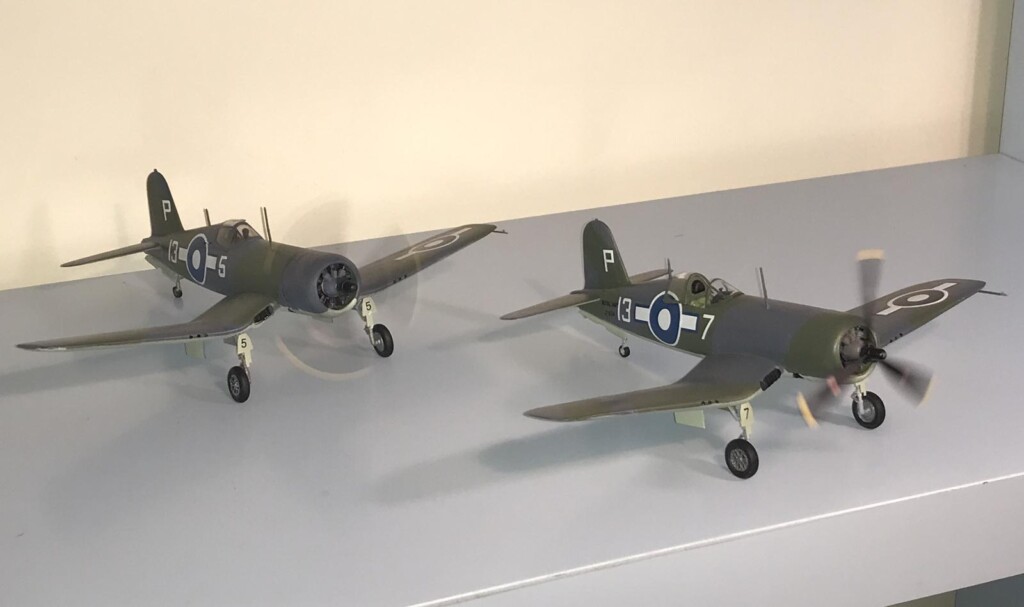
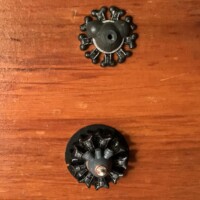
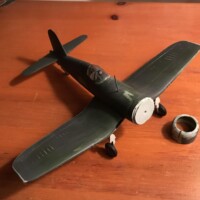
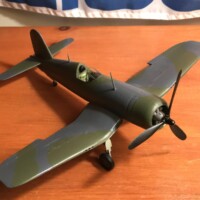
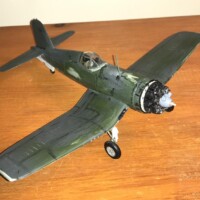

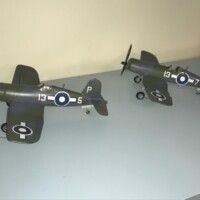
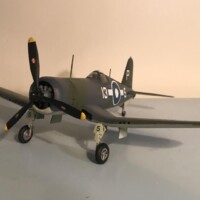
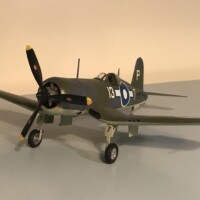
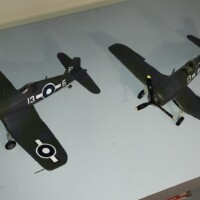
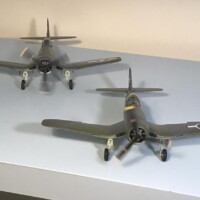
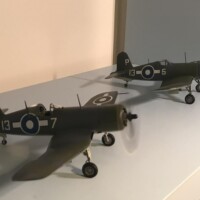
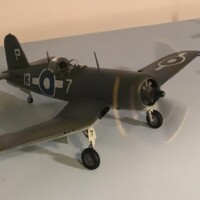
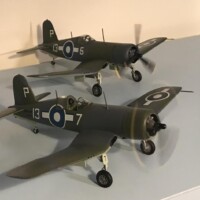
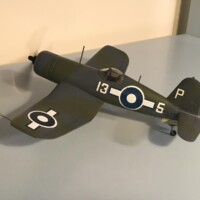
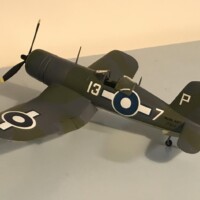
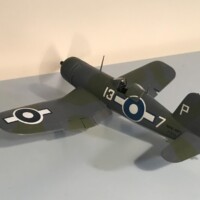
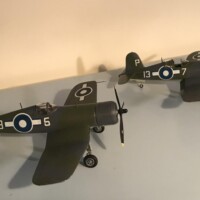
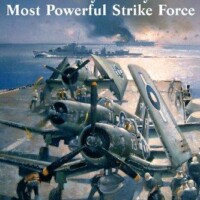
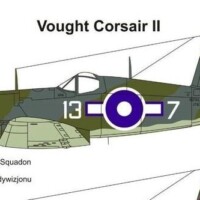
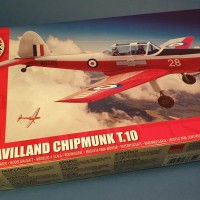
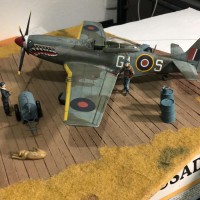

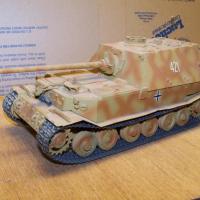
Great Corsairs, Bob. Hobbs’ BPF book is an excellent resource too.
Thanks, John. And thanks for your knowledge of Fleet Air Arm and the projects you share.
Excellent job on both Corsairs, Bob!
Thanks for the kind reply, Spiros, and best wishes for a great 2024!
Very informative build/text, Bob. Usually Otaki kits are pretty decent for their day. And with a little help can be turned into a fine model. But, that Otaki PW engine is indeed atrociously moulded and you made the right call swapping it out.
Thanks Eric. I wish we knew the back story of how such a bad engine was selected for an otherwise very decent model kit, but I doubt that will ever come out.
Two great looking Corsairs, Bob @bobd56az
Thanks for sharing this valuable information.
Thank you, John. I was intrigued that the FAA squadrons all trained at places where I either lived or was stationed at, in my Navy time, so posted info about those locations.
Fantastic looking Corsairs. Love em Bob!
Many thanks, Michael, and thanks for checking out the post.
Great couple of Corsairs, Bob.
Thanks for the kind response, George, and happy modeling!
Couple of fine-looking Corsairs!
Thank you, Greg!
Great pair of Corsairs Bob! It's nice to see some Royal Navy F4Us. I've always liked the gray/green camo pattern they used. Really nice work.
Thanks, Clint! I wanted the FAA grey-green pattern, rather than the USN dark blue for my British planes. Glad you liked my approach on the project.
G’day Bob(@bobd56az),
Two nicely done Corsairs.
The Otaki Corsair is one of the first 1/48 scale aircraft I built, probably not long after it was released.
I built it as the famous “122” on the box art.
It has long gone to God.
Liked!
Thank you, Michael! I have no idea how that random piece of plastic became the 'engine' part of that kit release. Maybe some day we will find out.
Happy modeling!
Nice work Bob!
Many thanks, David!
These two Corsairs turned out very nice. They look good in British markings, kind of a change of pace from the usual USN F4Us.
Thanks for the nice comments, Jay. I'm a bit of an anglophile in my model building, but I promise my next Corsair will be USN or USMC.
Happy modeling!